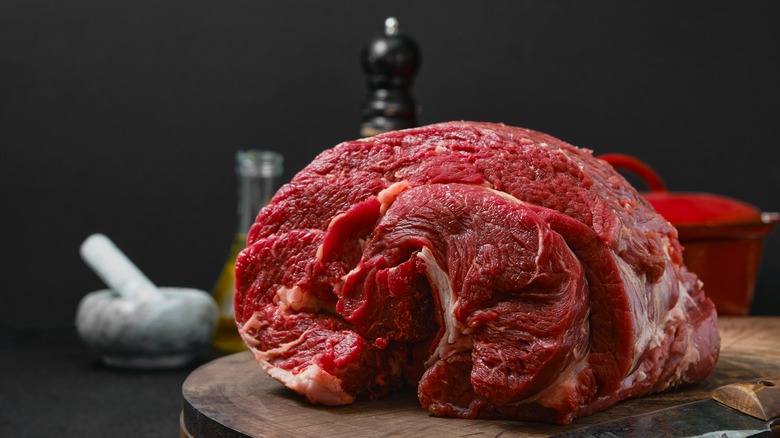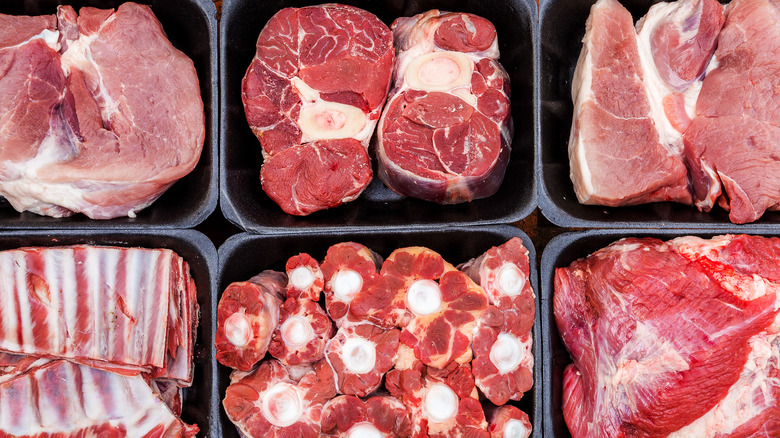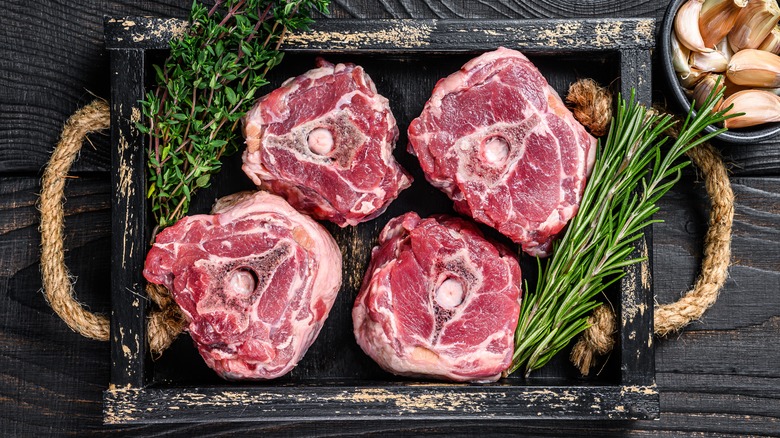Neck Meat Is A Delicious Cut You Should Stop Overlooking
When choosing cuts of meat for dinner, popular cuts like ribeye and sirloin come to mind. And if you're cooking steak or using other high-heat methods, these cuts are definitely the choices to go for. But if you're looking for cuts of beef to slow cook, neck meat is a delicious option to consider.
Whole cuts of neck meat are not usually found in the butcher's case, as it is usually a part that gets ground into minced meat along with other off-cuts of the butchering process. The good news is that as consumers look toward more affordable cuts of meat, neck meat will undoubtedly take its place in said butcher's case for home cooks to turn into delightful meals for the family.
So what is the main characteristic of neck meat? Like other hardworking muscles of the steer, it is significantly tougher than tender steak cuts due to the connective tissues intertwined between the muscle fibers. Fret not, as the precedence for coaxing delectable flavors and textures from tough meats has existed for ages: cook it low and slow.
Low and slow
Neck meat joins the pantheon of hardworking muscles that benefit from low and slow cooking. Cuts of beef such as oxtail and shank contain a significant amount of connective tissue that can be roughly divided into two categories: gristle and collagen. Gristle tends to be removed before cooking any meat cut as it contains elastin, a type of protein that will remain tough throughout. However, collagen, the protein that constitutes tendons, will basically melt away at the right temperatures, basting the meat as it cooks. The result? Flavorful meat that is so tender you could shred it with a fork.
Beef neck is often sold on the bone, which many home cooks swear provides superior flavor. Chunks of neck meat mean that the bones have been significantly cracked, allowing the flavor from the marrow to infuse the cooking liquid. Michael Fiorelli of Love & Salt waxes lyrical about neck meat on Thrillist: "...if you slow braise the meat on the bone you can achieve a depth of flavor not easily paralleled by any other part of the animal."
To experiment with cooking beef neck, seek out recipes that utilize bone-in beef, such as these slow-braised beef short ribs. Then, simply swap out the required meat with an equal amount of beef neck and proceed with the rest of the recipe, and you'll get an excellent idea of how to cook beef neck in future recipes.
The meat of the matter
The neck meat of other animal varieties also deserves a place at the dinner table and is even more popular in other parts of the world. Within the red meat category is lamb or mutton neck, while pork neck is common in various parts of East and Southeast Asia.
Like beef neck, lamb neck is one of the most affordable cuts of lamb and can be cooked in much the same way. Mutton or lamb neck is the traditional choice for Irish stew and can even be braised in a version of osso bucco.
As for pork neck, its wider girth means that the ratio of meat to bone is much higher, making it an easy and flavorful cut to use in quick-grilled applications. It is popular at Thai and Korean-style barbecue restaurants, where diners cook for themselves by grilling various cuts of meat and vegetables, including thin slices of marinated pork neck.


